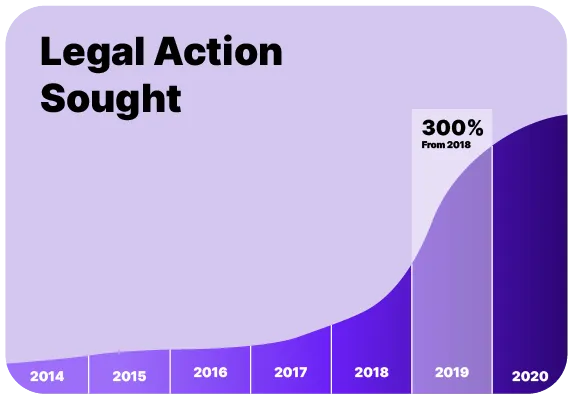
See How Subly Works.
Take a Tour

Accessibility compliance refers to adhering to standards and legislations. By enacting accessibility legislation, such as the Americans with Disabilities Act (ADA) and the European Accessibility Act (EAA), governments seek to create a more equitable and inclusive society.
These laws serve as a foundation for promoting diversity, reducing discrimination, and fostering a culture of accessibility and universal digital settings.
Accessibility compliance is relevant to a broad range of entities involved in creating, distributing, or broadcasting media content.
Companies that produce internal training videos or other media content for employees need to consider accessibility to ensure that all their employees can access and benefit from the information.
Individuals or organisations that create media content, including videos and audio recordings, should consider accessibility. This includes closed captions, audio descriptions, and accessible visual content.
TV networks and other broadcasting entities are often subject to regulations regarding accessibility. This includes requirements for closed captioning or providing audio descriptions for certain content.
Online streaming platforms, video-sharing websites, and other digital content providers are typically subject to accessibility standards. This can involve ensuring that the media content is accessible.
Educational content, whether delivered in person or online, should be accessible to students with disabilities. This includes providing captioning for videos, transcripts, and audio descriptions.
Government bodies responsible are often required to adhere to accessibility standards. This ensures that government information is accessible to all citizens.
Events that involve media content should strive to make their content accessible. This may involve providing live captioning or sign language interpretation for presentations.
Entities involved in creating advertising content, whether on traditional media or online platforms, should consider accessibility to reach a wider audience, including individuals with disabilities.

In the US large organisations have been the main target of ADA accessibility lawsuits for years, but smaller companies (under $25 million revenue) received 77% of cases in the first half of 2023 alone.
In the European Union (EU), the deadline is June 28, 2025 for companies to act and ensure compliance with the European Accessibility Act (EAA). After the deadline, we can expect to start seeing accessibility lawsuits in the EU.
Accessible media is not only a matter of compliance but also a means to create a more inclusive, diverse, and innovative society.
Accessible media ensures that individuals with disabilities have equal access to information, entertainment, and educational content. This fosters inclusivity and allows everyone to participate in various aspects of society.
Accessible educational media allows individuals with disabilities to fully participate in learning activities. This can enhance educational outcomes and provide equal opportunities for people with diverse learning needs.
By making media accessible, companies can reach a broader audience, including individuals with disabilities. This can lead to increased engagement and a more diverse and inclusive audience.
Accessible media content often leads to a better overall user experience for everyone, not just those with disabilities. Captions and audio description can benefit all users, regardless of their abilities.
Demonstrating a commitment to accessibility is a part of corporate social responsibility. Organisations contribute to a more inclusive and equitable society, positively impacting their brand image.
Organizations that prioritize accessibility are often viewed positively by the public. This can lead to increased customer loyalty, support, and a positive image in the community.
Many people who are Deaf can read text well. They get the audio information from transcripts or captions. Some people prefer sign language.
Some people who are hard of hearing like to listen to the audio to hear what they can, and have captions to fill in what they can’t hear adequately.
Some people who have difficulty processing auditory information also use captions. Many use transcripts so they can read at their own pace.
Some people cannot focus and comprehend auditory or visual information when there are changing visuals. For most videos, they also need descriptive transcripts.
Specific requirements vary based on regional laws and regulations. However, both the ADA in the US and EAA in the EU consider the WCAG guidelines as a best practice.
The Americans with Disabilities Act is a comprehensive civil rights law in the United States that prohibits discrimination against individuals with disabilities.
The European Accessibility Act is a EU directive aimed at improving the accessibility of products and services for persons with disabilities.
WCAG stands for Web Content Accessibility Guidelines. WCAG is a set of guidelines developed by the Web Accessibility Initiative of the World Wide Web Consortium (W3C).
The information presented within this page and/or guide is aimed at organisations seeking to learn the ropes of media accessibility and is correct at the time of publishing. Updates may be made periodically in line with changes to laws and regulations. Technical elements around media accessibility are described and presented in as simplified a manner as possible. Our guides and pages have no legal bearing, and cannot be relied on in the case of litigation.
Download a sample report to see your accessibility score, identify issues, and ensure compliance with WCAG standards.

"Subly's platform became the catalyst for our transformation. We revamped our strategy by introducing on-demand videos, now accessible in all UN languages and Portuguese, thereby breaking down linguistic barriers and opening our doors to a wider audience."
Enhanced efficiency. Global reach. Elevated accessibility.














